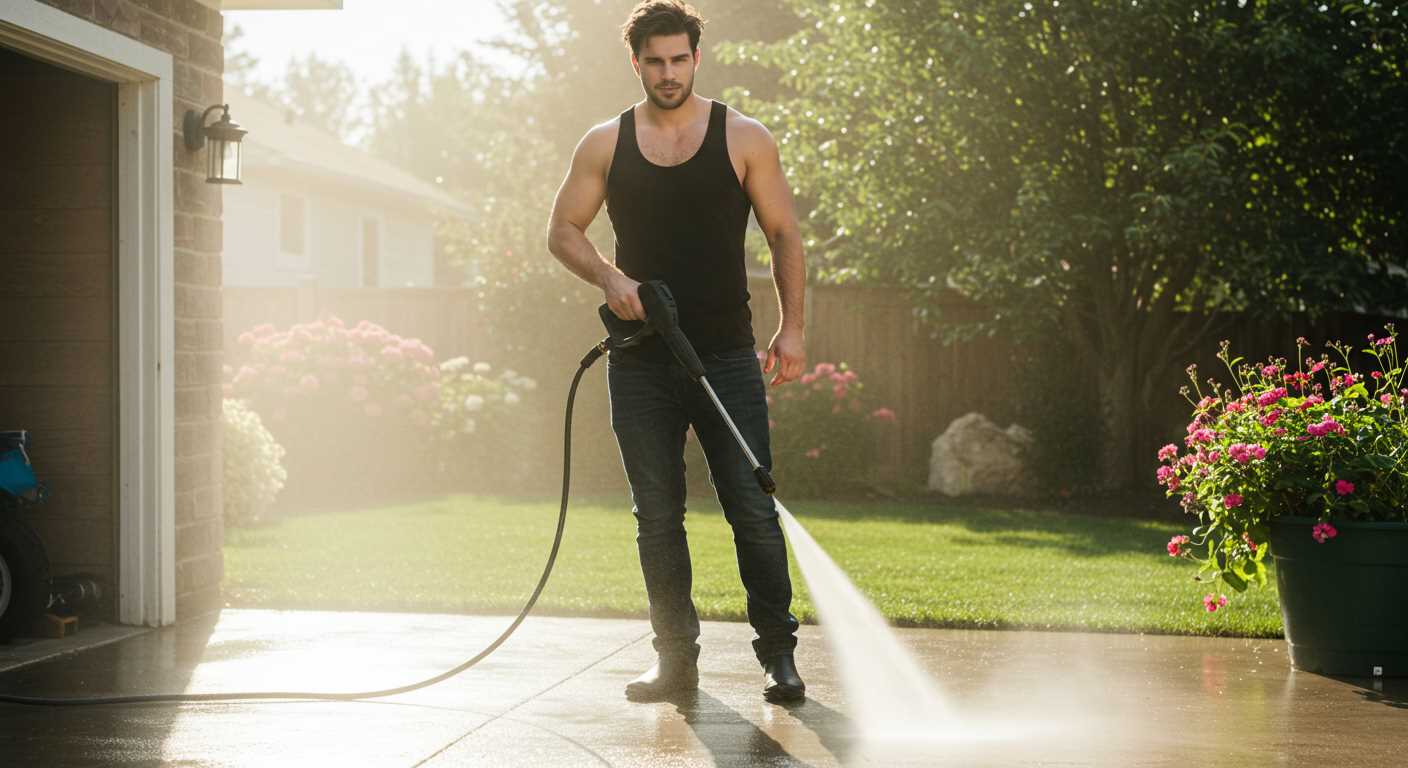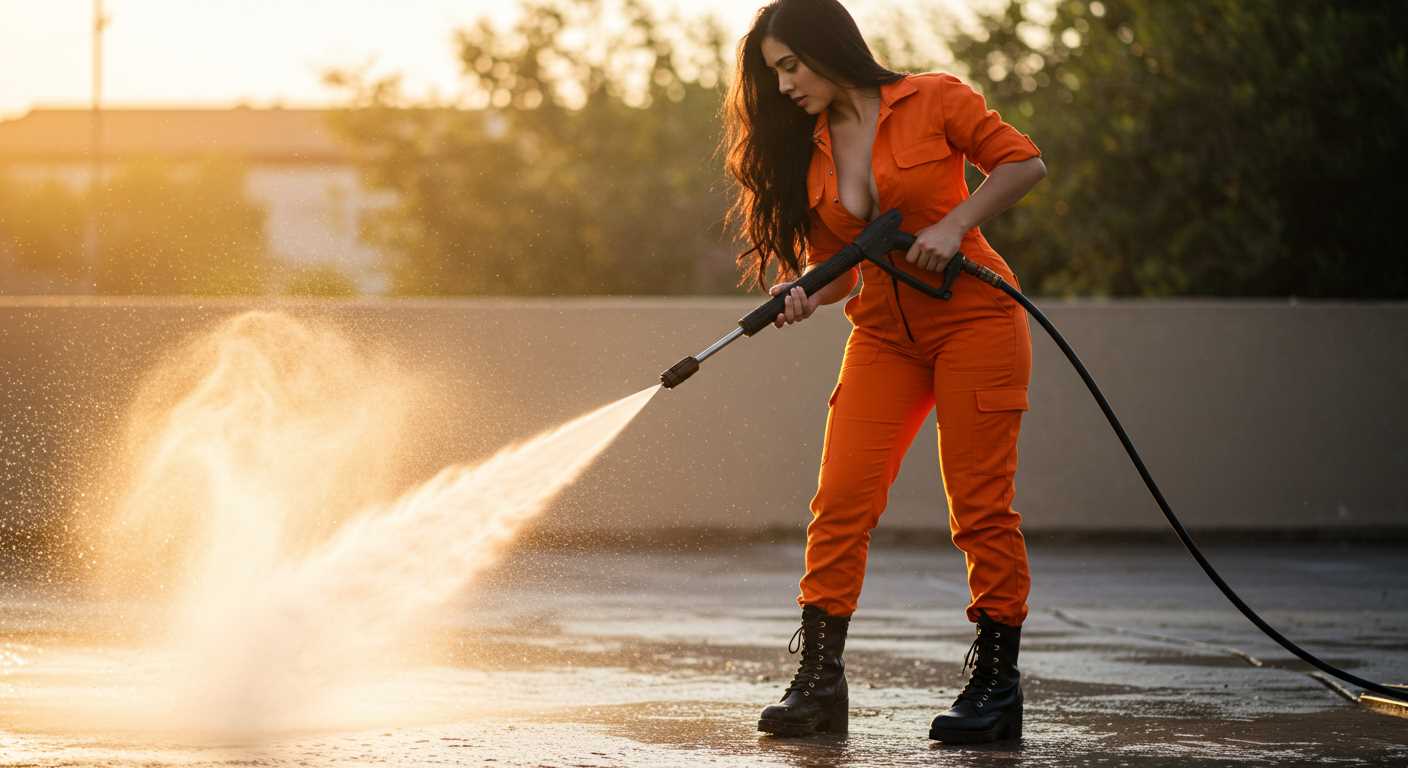



.jpg)
Mix one part vinegar with one part water in a spray bottle. This solution works wonders on stubborn stains and grime. Spray it generously over the surface and let it sit for about 15 minutes. The acidity of the vinegar breaks down the dirt, making it easier to scrub away.
Use a stiff-bristled broom or a deck brush for scrubbing. The bristles need to be firm enough to dislodge debris without damaging the surface. Work in sections, applying a bit of elbow grease to ensure that every inch is attended to. Rinse with a hose or bucket of water, ensuring all residues are washed away.
For persistent spots, consider using baking soda as a gentle abrasive. Sprinkle it on the affected area, then spray with the vinegar solution. This combination creates a fizzing reaction that can lift even the toughest stains. After allowing it to sit, scrub as before and rinse thoroughly.
Don’t underestimate the power of biodegradable soap, particularly if oil stains are present. Mix a few drops of dish soap in warm water and scrub the area with a brush. This method is safe for the environment and effective at removing grease without harsh chemicals.
Lastly, keep in mind that regular maintenance prevents heavy build-up. Sweeping debris regularly and using a mild cleaning solution periodically will keep those surfaces looking fresh and inviting. A little effort now saves a lot of work later.
Choosing the Right Cleaning Solutions for Pavers
For effective surface restoration, opt for biodegradable detergents specifically designed for stone and concrete. These solutions break down grime without damaging the material. A mix of warm water and dish soap works well for light stains, while a vinegar solution can tackle mildew and moss effectively.
In my experience, a solution of one part vinegar to three parts water is particularly useful on stubborn organic growth. Apply it generously, allowing it to sit for 15-20 minutes before scrubbing. Rinse thoroughly afterwards to prevent any residue.
For oil stains, a paste made from baking soda and water is excellent. Spread it over the stain, let it sit for a few hours, then scrub away. This method has saved many surfaces in my own yard from unsightly marks.
| Stain Type | Recommended Solution | Application Method |
|---|---|---|
| General Grime | Biodegradable detergent | Mix with water, scrub, and rinse |
| Mildew/Moss | Vinegar solution | Apply, let sit, scrub, rinse |
| Oil Stains | Baking soda paste | Apply paste, let sit, scrub, rinse |
Always perform a spot test on a small, inconspicuous area before applying any cleaning solution to the entire surface. This ensures compatibility and prevents damage. With the right approach and materials, restoring the original look of your paved areas is entirely achievable.
Preparing the Area Before Cleaning Pavers
Clear the space around the stones to ensure unobstructed access. This involves moving furniture, plant pots, and any other items that might hinder the process. Creating a clean slate is crucial for thorough maintenance.
Next, inspect for debris such as leaves, dirt, or twigs. Remove these with a broom or a rake, as they can trap moisture and hinder the effectiveness of the cleaning solutions. Afterward, consider hosing down the area lightly to loosen any stubborn grime, but avoid flooding the surface.
Evaluate the condition of the joints between the stones. If they appear to be overrun with weeds or moss, a manual removal might be necessary. Use a hand weeder or a small trowel to extract unwanted growth. This will prevent regrowth during the cleaning process.
Pay attention to any oil or grease stains. For these, applying a suitable absorbent material, such as cat litter or baking soda, can help draw out the substance. Allow it to sit for several hours before sweeping it away, making the subsequent cleaning more efficient.
Lastly, ensure the weather is conducive to the task. Avoid cleaning on rainy days or when the temperature is too low, as this can affect the drying time and the efficacy of cleaning agents. A dry, overcast day is often ideal for such work.
Manual Scrubbing Techniques for Stubborn Stains
For persistent marks on outdoor surfaces, a good scrubbing can work wonders. Here’s a straightforward approach to tackle those tough blemishes effectively.
-
Choose the Right Brush: Opt for a stiff-bristle brush designed for outdoor use. Avoid soft brushes as they won’t dislodge grime effectively.
Trending NowEVERSPROUT Cobweb Duster & Extension PoleReach high corners without laddersThis lightweight extension pole combined with a quality cobweb duster enables you to clean hard-to-reach areas with ease. Perfect for indoor and outdoor use, ensuring no cobweb is left behind. -
Mix a Cleaning Solution: Combine warm water with a suitable detergent or an eco-friendly cleaner. For oil or grease stains, a degreaser can enhance results. Refer to this best chemical for pressure washing concrete for inspiration.
-
Apply the Solution: Generously apply the mixture over the stained area. Allow it to sit for 10-15 minutes to penetrate the dirt.
-
Scrubbing Technique: Use a circular motion while scrubbing. This method helps lift the dirt. Apply extra pressure on particularly stubborn areas.
-
Rinse Thoroughly: After scrubbing, rinse the area with clean water. A hose with a spray nozzle works well to ensure all detergent and dirt are removed.
Repeat the process if necessary, especially for more challenging stains. In some cases, using a combination of scrubbing and soaking may yield better results. Keep at it, and those surfaces will look as good as new.
Utilising Natural Remedies for Paver Maintenance
For a gentle yet effective approach, consider using a mixture of vinegar and water. Combine one part white vinegar with two parts water in a spray bottle. Apply the solution to the surface and let it sit for about 15 minutes before scrubbing with a stiff-bristled brush. This remedy not only helps lift grime but also acts as a natural disinfectant.
Baking soda serves as another excellent option for tackling stubborn deposits. Create a paste by mixing baking soda with water, then apply it directly to stained areas. Allow it to sit for 30 minutes to an hour, then scrub thoroughly. The mild abrasiveness of baking soda aids in loosening dirt while being safe for the surface material.
For an eco-friendly solution, use a blend of dish soap and warm water. A few drops of biodegradable dish soap mixed with warm water can work wonders. Apply with a sponge or cloth, and rinse thoroughly. This method efficiently removes oil stains and other residues without harsh chemicals.
Hydrogen peroxide can be particularly effective against mildew and algae. A 3% solution can be sprayed onto affected areas, left to sit for 10-15 minutes, and then scrubbed or rinsed off. This remedy not only cleans but also helps prevent future growth.
Lastly, a simple solution of warm water and a small amount of lemon juice can refresh the surface and impart a pleasant scent. The acidity of lemon can help break down light stains, making it a great option for routine maintenance.
Finishing Touches: Sealing and Protecting Your Pavers
After thorough maintenance, applying a sealant is a key step. Select a high-quality product designed for the specific material of your stones, whether they are concrete, brick, or natural stone. For instance, a penetrating sealant works well for porous surfaces, while a topical sealant can provide a glossy finish and additional stain resistance.
Application Techniques
Before sealing, ensure the surface is completely dry. Use a roller or sprayer for even coverage; avoid brushes as they may leave streaks. Apply in thin layers, allowing adequate drying time between coats. Typically, two coats will enhance protection and durability.
Long-Term Care
Regular maintenance prolongs the life of the sealant. Clean the surface periodically with a gentle cleaner to remove dirt and grime. Reapply the sealant every couple of years, or as recommended by the manufacturer, to maintain optimal protection. For those considering additional cleaning tools, exploring a pressure washer with adjustable psi can be beneficial for future upkeep, even if it’s not part of the immediate plan.

.jpg)


.jpg)


